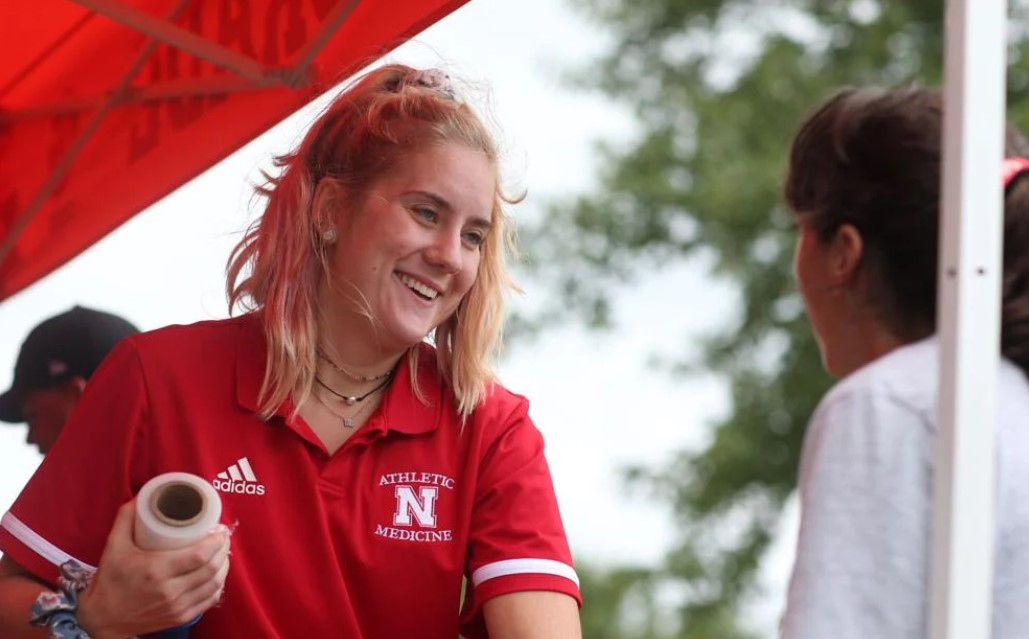Athletic Trainers in Secondary Schools
Athletic Trainers Crucial for Safety in High School Sports
Athletic trainers fill a very important role in the sports world, whether that’s on the sideline at a Super Bowl or at a local high school. Athletic trainers are healthcare professionals who are trained in the prevention, evaluation, treatment, and rehabilitation of athletic injuries.
Long gone are the days when an athletic trainer is recognized as someone who “just tapes ankles.” These trained professionals are often certified by a national board of certification and also licensed in the state they work in.
Athletic trainers are often the first people to treat an injury or ailment in an athletic population and sometimes an athletic trainer being present is the difference between life and death for an athlete.
 This was true for a football athlete in Texas who collapsed for unknown reasons during a game. His athletic trainer witnessed him collapse unexpectedly and ran to evaluate him on the field. The athletic trainer checked the player's breathing and pulse and began performing CPR until emergency medical personnel arrived to transport the player to the hospital. Because of the quick reaction of this athletic trainer, the life of a young football player was saved and he was able to return home with his family.
This was true for a football athlete in Texas who collapsed for unknown reasons during a game. His athletic trainer witnessed him collapse unexpectedly and ran to evaluate him on the field. The athletic trainer checked the player's breathing and pulse and began performing CPR until emergency medical personnel arrived to transport the player to the hospital. Because of the quick reaction of this athletic trainer, the life of a young football player was saved and he was able to return home with his family.
There are many stories like that one in Texas, and they should make you wonder: do the young athletes you know have an athletic trainer looking out for their safety?
The National Athletic Trainers’ Association published an article citing a study from 2015 that showed “37 percent of public secondary schools in the country have a full-time athletic trainer (AT) – the gold standard of care recommended by the National Athletic Trainers’ Association – only 28 percent of private secondary schools do.”
If athletic trainers are so vital to the health of athletes, why do so few secondary schools have a full-time athletic trainer?
The most common reasons are a lack of budget and lack of awareness. Athletic Trainer Services in the Secondary School Setting: The Athletic Training and Locations Services Project (ATLAS) was conducted by the Korey Stringer Institute and published in 2019.
Some staggering statistics from that study show that “Of the 20,272 secondary schools identified, 66% schools (13,473) had “access” to athletic trainer services, defined as receiving services in any form by a licensed or certified AT, while 34% (6,799) had no access. Of those schools with access to AT services, 53% (7,119) received full-time (FT) services, the gold standard of care, while 47% (6,354) received part-time (PT) services.”
These statistics prove that athletic trainers are still not widely available to secondary school athletes across the country. While there may be some improvement since the study conducted in 2015, there has not been a significant increase in the availability of athletic trainers to secondary school athletes.
The hope is that with increased awareness of who athletic trainers are and the benefits of having an athletic trainer available at sporting events and available to athletes, more secondary schools will choose to provide athletic trainers for their athletes.
Statements from the AAFP and the AMA encourage medical coverage, preferably by an athletic trainer, at schools with sports programs. These statements are just a few of the many reasons every secondary school should have an athletic trainer.
![HR Logo [Recovered]_Full Color Vertical-1](https://blog.healthyroster.com/hs-fs/hubfs/HR%20Logo%20%5BRecovered%5D_Full%20Color%20Vertical-1.png?width=199&height=178&name=HR%20Logo%20%5BRecovered%5D_Full%20Color%20Vertical-1.png)


